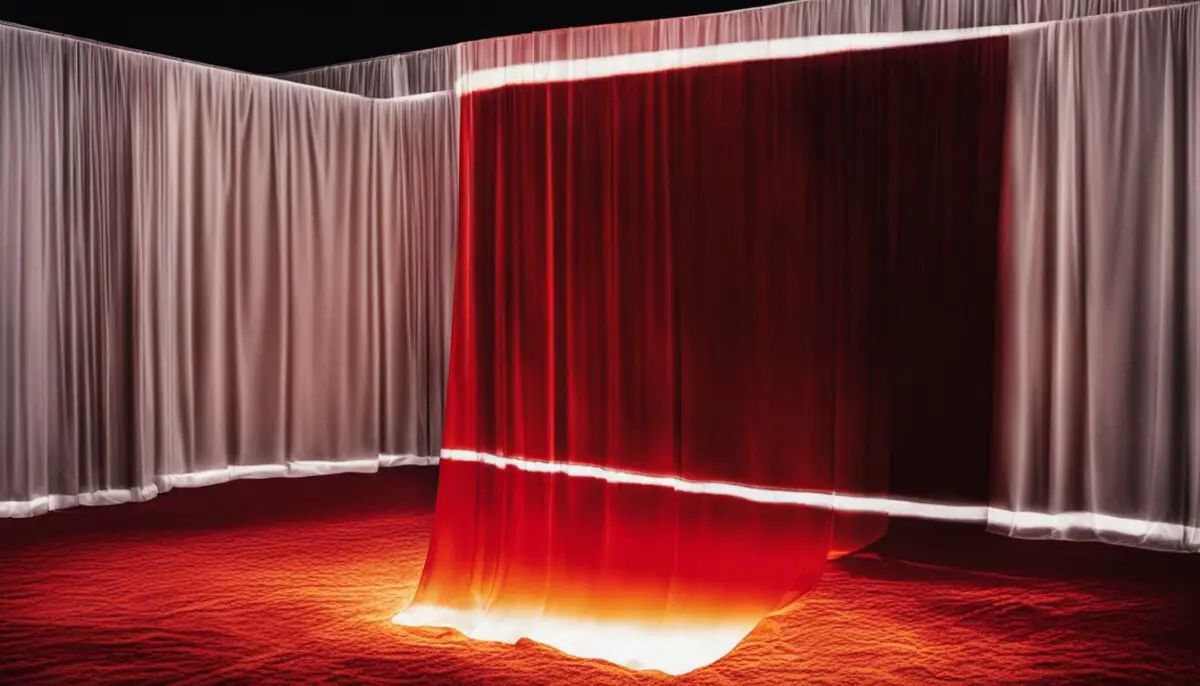Last Updated on 5 months by Francis
Have you ever wondered if infrared cameras have the capability to see through curtains? Infrared cameras have become increasingly popular due to their ability to detect radiation and convert it to visible images. These cameras have many applications, from medical imaging to home inspections.
However, there is still some confusion surrounding the capabilities of infrared cameras when it comes to seeing through curtains. In this section, we will explore the technology behind infrared cameras and their capabilities. We will also look at the factors that affect their effectiveness in seeing through curtains, such as curtain material and thickness.
Contents
Key Takeaways
- Infrared cameras detect radiation and convert it into visible images.
- They have many applications, including medical imaging and home inspections.
- The ability of infrared cameras to see through curtains depends on factors such as curtain material and thickness.
- Privacy concerns must also be taken into account when using thermal imaging technology.
- Understanding the technology and capabilities of infrared cameras can help make informed decisions regarding curtain usage.
Understanding Infrared Technology
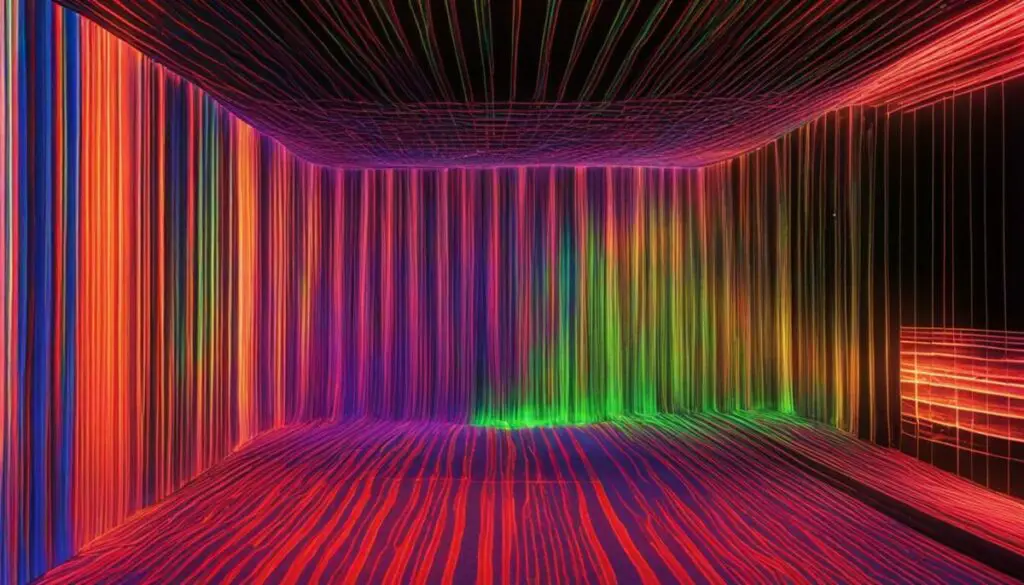
If you’re wondering how an infrared camera works, it’s all about thermal imaging technology. Infrared cameras use infrared radiation to detect and visualize the temperature of objects and surfaces, creating an image that shows the distribution of heat.
The key to the functioning of an infrared camera is the detection of infrared radiation, which is emitted by all objects and surfaces based on their temperature. The camera’s detector converts this radiation into an electrical signal, which is then processed to create a visual representation of the temperature distribution.
The resulting image shows a range of colors that represent the different temperatures within the field of view. Warmer areas appear as red or yellow, with cooler areas appearing as blue or purple. This thermal imaging technology is what allows infrared cameras to create detailed images that are not visible to the naked eye.
How Does Infrared Camera Work?
The basic principle of an infrared camera is straightforward:
- The camera detects infrared radiation coming from an object or surface.
- The detector converts the infrared radiation into an electrical signal.
- The camera’s software processes the signal to create an image that shows the temperature distribution.
The resulting image provides valuable information that can’t be obtained through visual inspection alone. Infrared cameras are useful for a variety of applications, including:
- Building inspections to identify areas of heat loss or water damage
- Industrial inspections to detect hot spots in electrical equipment
- Medical imaging for identifying inflammation or other abnormalities
- Security and surveillance to detect intruders or monitor crowds
The versatility of infrared cameras is due to their ability to “see” beyond what is visible to the naked eye, making them a powerful tool in a wide range of industries and applications.
Curtain Material and Opacity
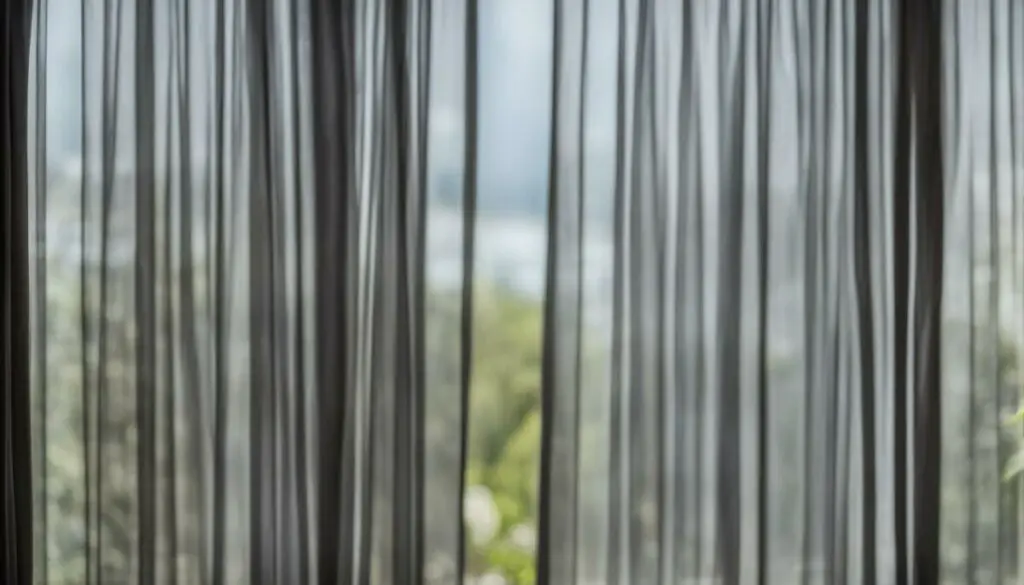
When it comes to choosing curtains for privacy, the material is a crucial factor to consider. Some curtain materials are more transparent than others, which can impact the ability of infrared cameras to see through them.
If maintaining privacy is a top priority, it is recommended to choose curtains made from thicker or denser materials that offer higher levels of opacity. (curtain material for privacy)
However, it’s important to keep in mind that curtain thickness can also impact their transparency for infrared cameras. Thicker curtains may be more challenging for infrared cameras to penetrate, while thinner curtains may be more transparent. (curtain transparency for infrared cameras)
To give a better idea of the opacity of different curtain materials, we’ve compiled a simple table below:
| Curtain Material | Opacity Level |
|---|---|
| Sheer | Low |
| Chiffon | Low |
| Satin | Medium |
| Velvet | High |
It’s important to note that opacity levels may vary depending on the thickness of the material.
Choosing the right curtain material can help maintain privacy and ensure that infrared cameras are not able to see through them. While some materials may offer higher levels of transparency, they may not be suitable for privacy concerns.
Next, we’ll explore the limitations of infrared cameras and factors that can affect their effectiveness in seeing through curtains. (curtain opacity for thermal imaging)
Limitations of Infrared Cameras
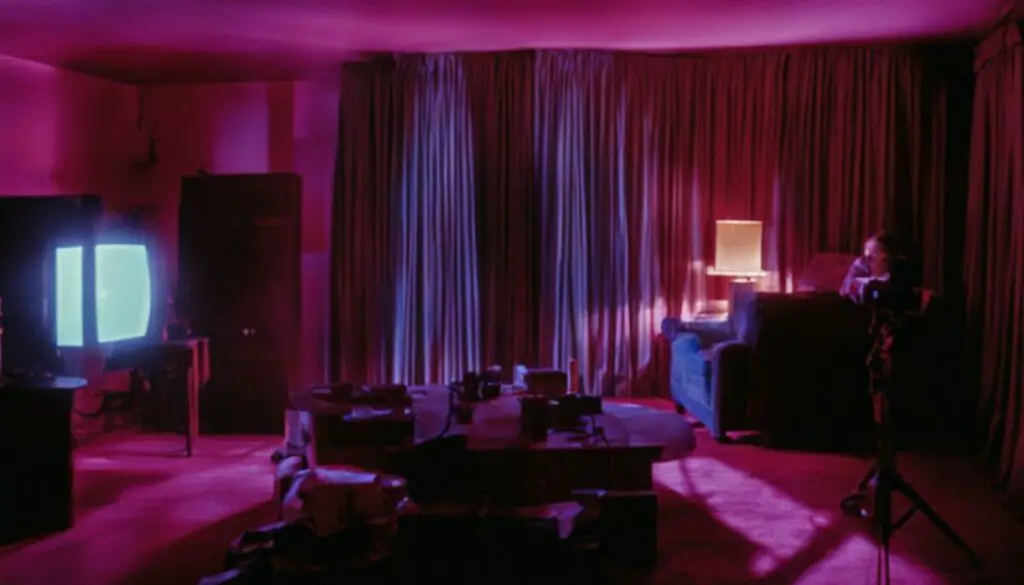
While infrared cameras have a multitude of applications, including detecting heat loss in buildings and industrial inspection, there are limitations to their capabilities when it comes to seeing through curtains. These limitations depend on several factors, including:
- The type of material the curtain is made of
- The thickness of the curtain
- The temperature difference between the curtain and the area behind it
It is important to note that even under the best conditions, infrared cameras cannot see through all types of curtains. For example, curtains made of multi-layered materials, such as those with foam or insulating backing, are unlikely to be penetrated by infrared cameras.
In addition, the opacity of the curtain material can also affect the effectiveness of infrared cameras. Curtains made of thicker, darker fabrics are more opaque and thus more difficult for infrared cameras to penetrate.
Another factor that can impact the effectiveness of infrared cameras in seeing through curtains is the temperature difference between the curtain and the area behind it. If the temperature difference is too small, the camera may not be able to effectively detect the infrared radiation, resulting in an inaccurate image.
Despite these limitations, infrared cameras still have many practical applications beyond curtain penetration. Home inspections, for example, can utilize infrared cameras to detect issues such as moisture damage, electrical faults, and insulation problems. The medical field also uses infrared cameras for applications such as detecting elevated body temperatures, which can be an indicator of illness or infection.
Table of Infrared Camera Applications
| Industry | Application |
|---|---|
| Building and construction | Detecting heat loss, locating water damage, identifying electrical issues |
| Industrial | Monitoring manufacturing processes, detecting leaks and hotspots in pipelines, inspecting machinery |
| Medical | Identifying skin temperature changes, detecting inflammation and infections, monitoring blood flow |
| Law enforcement | Identifying suspects in low light conditions, locating hidden objects or persons |
| Environmental | Identifying environmental hazards, monitoring wildlife populations |
As seen in the table above, infrared cameras have a wide range of applications and can be an invaluable tool in many industries and fields. While their capabilities in seeing through curtains may be limited, their overall versatility and usefulness should not be underestimated.
Thermal Imaging and Privacy

When it comes to curtains, privacy is a major concern for many people. The type of curtain material used can play a significant role in preserving privacy.
Curtain material for privacy: Thicker, heavier curtains will generally be more effective at preventing outsiders from seeing into a room.
Thermal imaging curtains: However, when it comes to thermal imaging, thicker curtains may not be the best choice. Thermal imaging cameras detect infrared radiation, which is emitted by all objects with a temperature above absolute zero. Thicker curtains can block the radiation from passing through, making it more difficult for the camera to “see” through them.
So what type of curtain material is better for thermal imaging and privacy? The ideal curtain material will be thin enough to allow infrared radiation to pass through, while still providing adequate privacy.
“Thermal cameras provide enhanced privacy for various applications by detecting heat signatures and ignoring background clutter such as facial features, clothing, and other non-essential data points.” – FLIR Systems
Some curtain materials that are more effective for thermal imaging include:
- Sheer curtains
- Cotton curtains
- Polyester curtains
These materials are thin enough to allow infrared radiation to pass through, yet still provide a level of privacy for the room.
The Role of Curtain Thickness
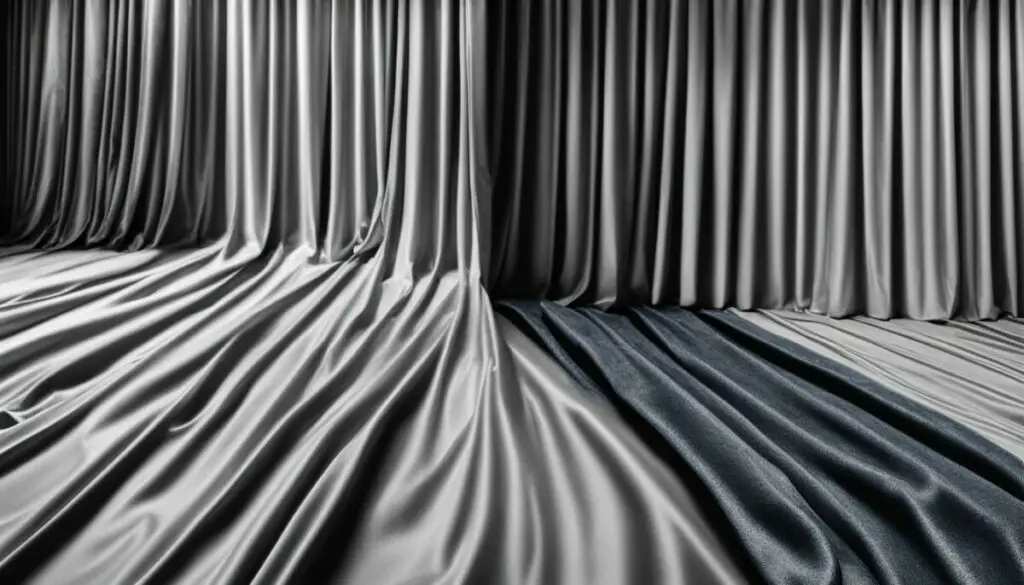
When it comes to infrared cameras and curtains, the thickness of the curtains can have an impact on their transparency for thermal imaging. Thicker curtains may affect the ability of infrared cameras to see through them, so it’s important to consider this factor when choosing curtains for thermal imaging purposes.
The transparency of curtains for infrared cameras can also depend on the material of the curtains. As we discussed in section 3, certain materials may be more opaque or transparent to infrared radiation than others, which can affect the ability of infrared cameras to see through them.
It’s important to note that the thickness of curtains can also affect their insulating properties. Thicker curtains may provide better insulation and energy efficiency, but they may also block more infrared radiation, which can impact the effectiveness of infrared cameras.
Comparing Curtain Thickness and Transparency for Infrared Cameras
| Curtain Type | Thickness | Transparency for Infrared Cameras |
|---|---|---|
| Sheer | Thin | More transparent |
| Velvet | Thick | Less transparent |
| Cotton | Medium | Varies depending on weave |
As we can see from the table above, sheer curtains are generally more transparent to infrared radiation than thick velvet curtains. Cotton curtains may vary in their transparency depending on the weave of the fabric and their thickness.
When it comes to choosing curtains for thermal imaging purposes, it’s important to consider both the material and thickness of the curtains. Thicker curtains may provide better insulation and energy efficiency, but they may also block more infrared radiation, which can impact the effectiveness of infrared cameras.
Infrared Cameras in Home Inspections
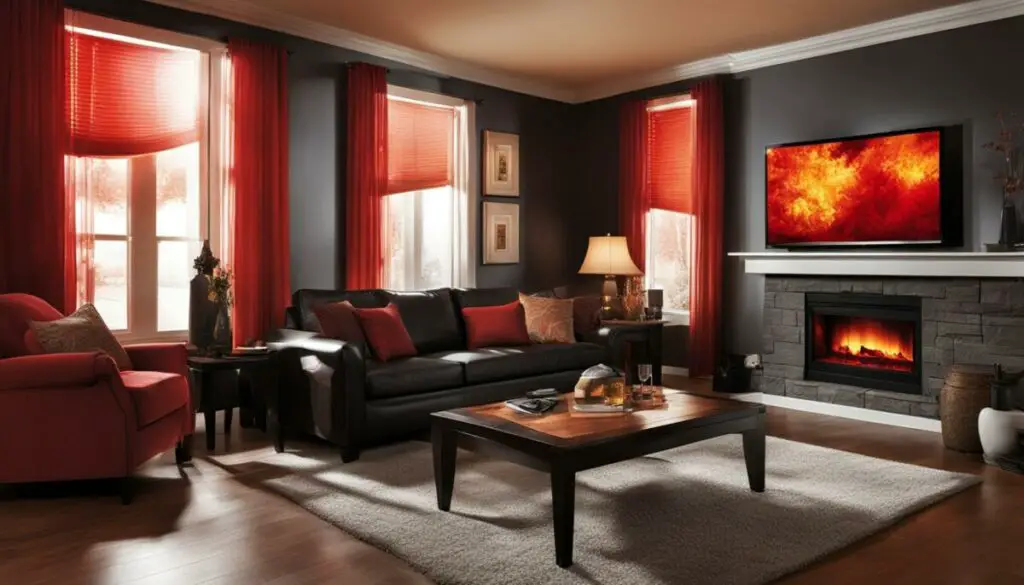
If you’re in the process of buying a home, you want to be sure that it’s in good condition. That’s where home inspections come in handy. Infrared cameras are increasingly being used in home inspections to detect issues that may not be visible to the naked eye.
During a home inspection, an inspector will use an infrared camera to scan the walls, ceilings, and floors for areas that are colder or hotter than the surrounding areas. These temperature changes can indicate a range of issues, from air leaks to insulation problems.
With the help of infrared cameras, home inspectors can identify issues that may have otherwise gone unnoticed, helping to ensure that you’re aware of any potential problems before you make an offer on a home. This can save you a lot of money and headaches down the road.
Benefits of using Infrared Cameras in Home Inspections
There are several benefits to using infrared cameras in home inspections. Here are a few:
- Helps to identify issues that may not be visible to the naked eye
- Non-destructive testing method
- Can save time and money by identifying issues before they become major problems
- Can complement traditional inspection methods to provide a more comprehensive picture of a home’s condition
Overall, infrared cameras are a valuable tool in home inspections. By detecting issues that may have otherwise gone unnoticed, they can help ensure that you’re making an informed decision when it comes to purchasing a home.
Curtains and Energy Efficiency
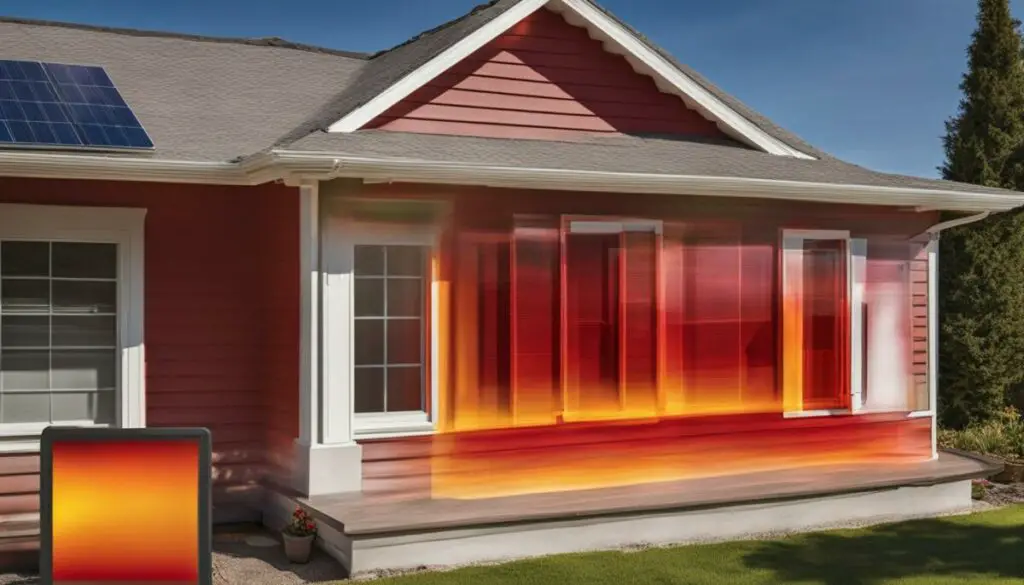
Curtains are an important element in maintaining privacy in homes, but they can also play a role in improving energy efficiency. Choosing the right curtain material can make a significant difference in preventing heat loss during colder months and keeping heat out during warmer months. Thermal imaging technology can help identify areas where heat loss may occur, allowing homeowners to make informed decisions regarding curtain choices.
When it comes to curtain material for privacy, thicker curtains may be preferred. However, thicker curtains may also be less transparent and more difficult for infrared cameras to penetrate. For thermal imaging purposes, it is important to consider the transparency of curtain material to ensure accurate readings.
| Curtain Material | Transparency |
|---|---|
| Sheer or Lace | High transparency |
| Cotton or Linen | Medium transparency |
| Velvet or Brocade | Low transparency |
As shown in the table above, sheer or lace curtains have high transparency, making them more suitable for thermal imaging purposes. In contrast, heavier materials like velvet or brocade have low transparency, making them less suitable for infrared camera use.
Choosing the right curtain material can have a significant impact on energy efficiency in the home. By using thermal imaging technology to assess heat loss through curtains, homeowners can make informed decisions and choose curtains that will not only provide privacy but also assist in maintaining a comfortable and energy-efficient home.
Infrared Cameras in Diverse Industries
Infrared cameras have become an essential tool in various industries due to their exceptional imaging capabilities. While they are widely used in security and surveillance, they also have a significant impact on other fields such as:
- Environmental Studies: Infrared cameras help monitor and document changes in landscapes, assess vegetation density, and identify areas of water depletion.
- Industrial Applications: Infrared cameras can detect mechanical failures in complex machinery, monitor manufacturing processes, and identify energy losses in industrial plants.
- Medical Diagnosis: Infrared cameras can be used in medical diagnosis to aid in the detection of different pathologies and injuries, particularly those related to circulatory and muscular systems.
- Building Diagnostics: Infrared cameras can reveal insulation deficiencies, air leaks, and water damage through thermal imaging, making them a vital tool in energy audits and building inspections.
Overall, infrared cameras contribute to improving the efficiency, safety, and accuracy of operations in various industries, making them an indispensable tool in today’s fast-paced world.
Conclusion
Infrared cameras have emerged as a versatile technology with many practical applications. While they have the potential to see through certain types of curtains, this depends on a variety of factors such as curtain material and thickness. It’s important to consider privacy concerns when using thermal imaging technology in relation to curtains.
If you’re planning on using an infrared camera to assess thermal insulation or energy efficiency, choosing the right curtain material can be an effective way to improve heat retention in your home. On the other hand, if you’re concerned about privacy and don’t want your curtains to be penetrable by thermal imaging, you’ll need to choose curtain materials that effectively block infrared radiation.
Further Considerations
While infrared cameras can be an effective tool for home inspections, they should be used in conjunction with traditional inspection methods rather than as a standalone solution. Depending on the specific application, you may also need to consider factors such as humidity and air circulation when interpreting thermal images.
Beyond home inspections and curtain penetration, infrared cameras have a wide range of applications across various industries and fields. They’re used in law enforcement, firefighting, and medical imaging just to name a few. By gaining a better understanding of infrared technology and its capabilities, you can make informed decisions regarding the appropriate use of thermal imaging technology.
FAQ
Can infrared cameras see through curtains?
Yes, infrared cameras have the capability to see through certain types of curtains depending on factors such as curtain material and thickness.
How does infrared camera technology work?
Infrared cameras detect and convert infrared radiation into visible images using thermal imaging technology. They capture the heat emitted by objects and translate it into a visual representation.
What is the impact of curtain material and opacity on infrared camera visibility?
The transparency of curtain material can affect the ability of infrared cameras to see through them. Certain curtain materials may be more transparent to infrared radiation, allowing the camera to penetrate them more effectively.
What are the limitations of infrared cameras in seeing through curtains?
While infrared cameras have the capability to see through some curtains, their effectiveness can be affected by factors such as curtain material, thickness, and other environmental conditions. It is important to consider these limitations when using infrared cameras for curtain penetration.
Can thermal imaging technology ensure privacy when it comes to curtains?
Yes, thermal imaging technology can be utilized to assess privacy concerns related to curtains. By choosing the right curtain material, you can enhance privacy while still allowing infrared cameras to detect heat signatures.
How does curtain thickness impact the ability of infrared cameras to see through them?
Thicker curtains may reduce the transparency for infrared cameras, making it more challenging for them to penetrate and detect heat signatures. When using thermal imaging for curtain penetration, the thickness of the curtain should be taken into consideration.
What are the applications of infrared cameras in home inspections?
Infrared cameras are commonly used in home inspections to detect issues that may not be visible to the naked eye. They can help identify areas of heat loss, moisture intrusion, and electrical problems, providing valuable insights for inspection professionals.
Can thermal imaging technology assess the energy efficiency of curtains?
Yes, infrared cameras can be used to assess the energy efficiency of curtains. By identifying areas where heat loss may occur, infrared cameras can help guide the selection of curtain materials that improve energy efficiency.
What are some other applications of infrared cameras?
In addition to curtain penetration and home inspections, infrared cameras are widely used in various industries and fields such as electrical inspections, HVAC diagnostics, building maintenance, and even wildlife monitoring.
Conclusion
Infrared cameras have the potential to see through certain types of curtains, depending on factors such as curtain material and thickness. However, there are limitations to their capabilities, and privacy concerns must also be taken into account. Understanding the technology behind infrared cameras and their applications can help make informed decisions regarding curtain choice and usage.

